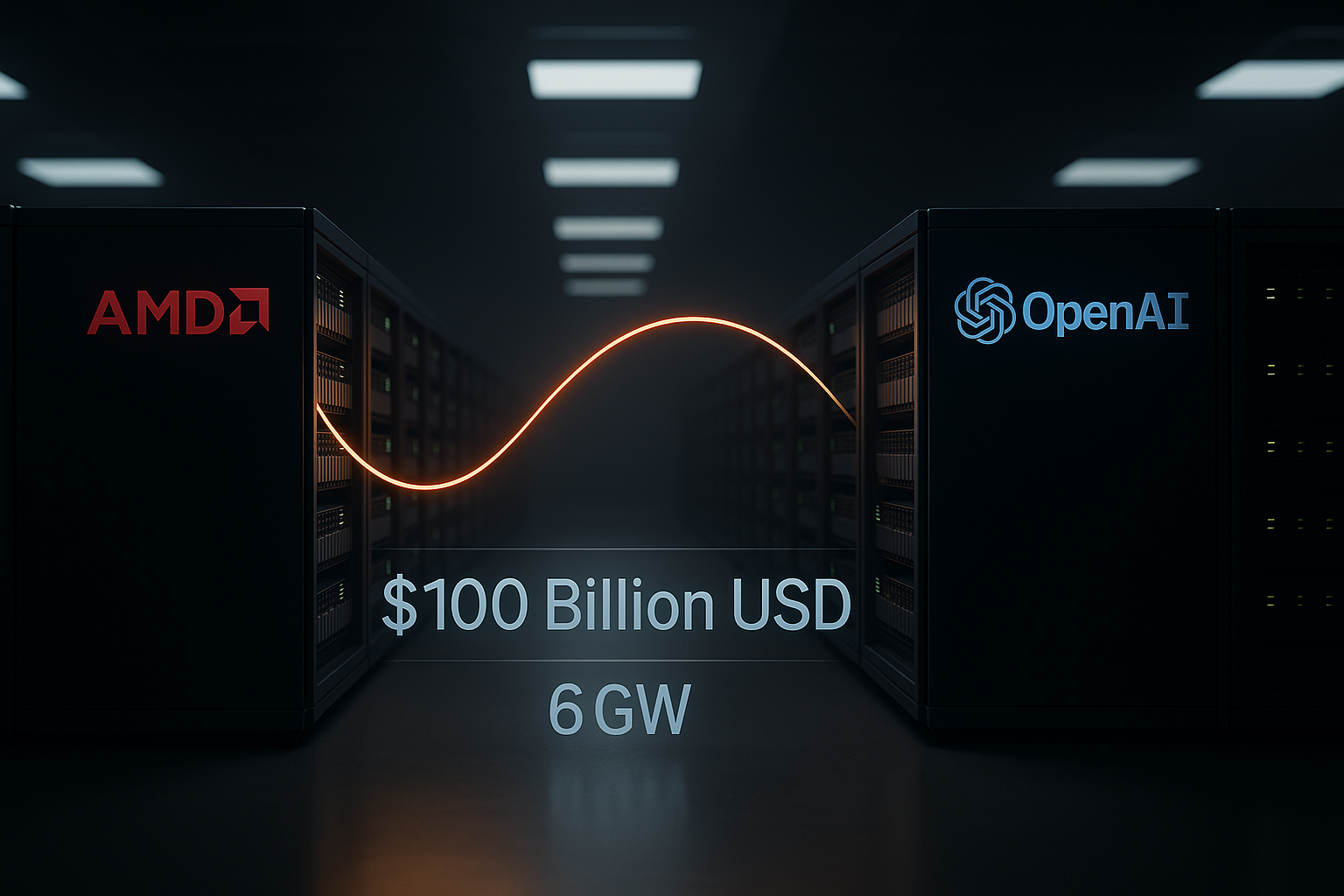When AMD's stock shot up 25% before the morning coffee had even kicked in today, Wall Street insiders knew something big was cooking. It wasn't just big—it was potentially industry-altering. The chipmaker just struck a massive partnership with OpenAI worth an estimated $100 billion, agreeing to deliver 6 gigawatts of computing power to fuel the AI company's ambitious plans.
Let me be clear: this isn't your run-of-the-mill supplier agreement. It's a strategic alliance that could fundamentally alter the competitive landscape in AI chips.
The deal centers around AMD's upcoming Instinct MI450 chips (still in development), with initial deployments scheduled for the second half of 2026. But here's the kicker—OpenAI received warrants to purchase up to 160 million AMD shares, roughly 10% of the company. That's skin in the game, folks.
"This represents a fundamental shift in how the AI chip market functions," a semiconductor analyst told me this morning (requesting anonymity because they weren't authorized to speak publicly). "It's not just about who has the best specs anymore."
The timing is particularly fascinating. Just last month, OpenAI announced a similarly massive $100 billion partnership with Nvidia—currently the undisputed heavyweight champion of AI chips—for 10 gigawatts of computing power. So what gives?
Having covered the semiconductor industry since the early days of the AI boom, I've watched companies like OpenAI become increasingly nervous about their dependency on Nvidia's chips. It's classic supply chain strategy—don't put all your eggs in one basket, especially when that basket controls your destiny.
Sam Altman, OpenAI's CEO, isn't making this move out of some abstract love for market competition. This is about survival and leverage. When your entire business runs on chips, and one company controls the vast majority of those chips... well, that's what economists politely call "a concerning power imbalance."
For AMD, this deal couldn't have come at a better time. Despite CEO Lisa Su's impressive leadership transforming the company over the past decade (AMD stock is up roughly 5,000% since she took over in 2014), the company has struggled to translate its success against Intel in the CPU market into similar victories against Nvidia in AI accelerators.
This partnership doesn't just mean revenue—it offers the market validation that institutional investors demand before placing significant bets.
The structure of those warrants deserves a closer look, too. They're not just handing over equity—the deal ties OpenAI's potential ownership to actual deployment milestones and share price targets. Both companies have something substantial to lose if things go sideways.
There's fascinating historical precedent here. Back in the early '80s, IBM's decision to source CPUs for its first personal computer essentially created the Intel-AMD duopoly that dominated computing for decades. We might be witnessing a similar inflection point that defines the competitive landscape for AI chips for the next generation.
Look, the AI computing arms race is just getting started. These gigawatt-scale deployments aren't just business deals—they're the foundations of what could become the most significant technological transformation in our lifetimes.
The market reaction tells its own story. AMD's stock jump reflects a fundamental reassessment of the company's position in the AI economy, while Nvidia's modest decline suggests investors see this as competitive rebalancing rather than a death blow.
For investors (and I've spoken with several this morning), the most intriguing aspect isn't picking a winner between AMD and Nvidia. It's understanding how this reshuffled competitive landscape affects each company's margins, pricing power, and R&D priorities going forward.
Both companies will likely deliver substantial returns as demand for AI computing continues its seemingly unstoppable growth. The real question is how these strategic alliances reshape the competitive balance that ultimately determines shareholder returns.
Meanwhile, Sam Altman continues playing 4D chess, securing the computing resources needed for AI dominance while carefully balancing supplier relationships. And I can't help but wonder if Nvidia's CEO Jensen Huang is shopping for a new leather jacket tonight while plotting his counterplay.
After all, in the high-stakes world of AI chips, today's partnership announcement is just another move on an increasingly complex board.
